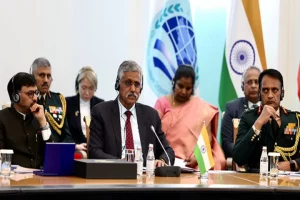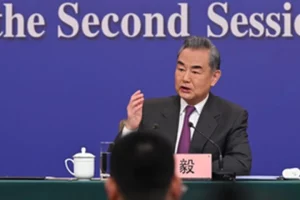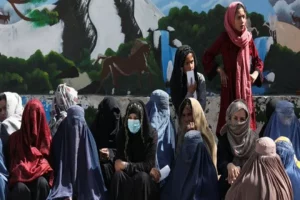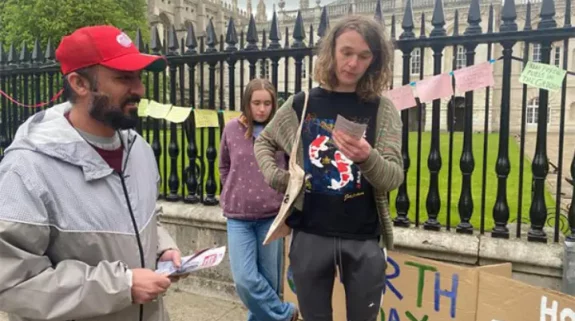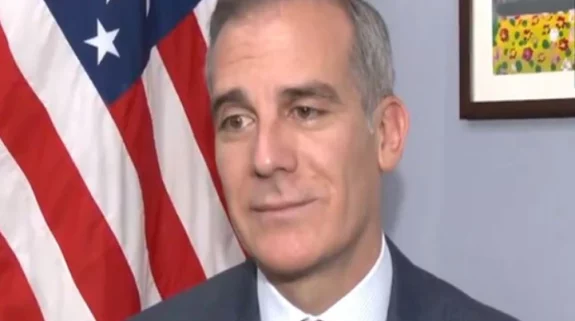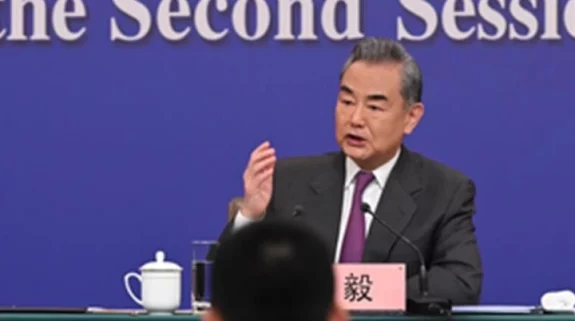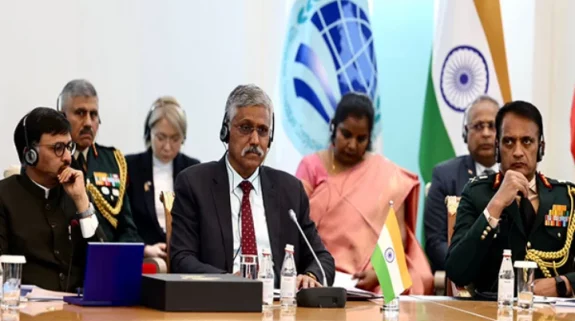China’s “wolf warriors” for all their bravado must be developing cold feet as the new numbers are coming thick and fast about the prospects of US President Donald Trump winning a second term in office.
With more than a month still to go for the November 3 Presidential elections, and presidential debates yet to come, Trump has come from behind and crossed the 50 per cent mark in the popularity charts, edging out his democratic party rival Joe Biden. According to Rasmussen Reports, Trump’s popularity has clocked 50 per cent or above since September 14.
The Chinese are well aware that whenever incumbent Presidents have been backed by half or more American voters, the White House has been theirs for another four years.
Other pollsters also reveal that starting from a low base, Trump’s popularity graph has begun to elevate, as elections draw closer. The Hill/Harris X poll notches Trump’s approval rating at 48 percent, while the Economist/YouGov data show 45 per cent respondents favoured the President for a second term.
To put these pre-poll numbers in some perspective, it is important to note that Trump won the 2016 elections when a comparable Gallup poll ahead of the elections showed that he had an approval rating of 33 per cent, significantly below that of his Democratic Party rival Hillary Clinton.
According to influential pollster Helmut Norpoth, a political science professor, who has been spot on in predicting five out of six elections since 1996, “not only will the president be re-elected, but he will expand his margin in the electoral college from 304 electoral votes in 2016 to 362 in 2020”, The Independent reports.
Why should the second Trump presidency worry the Chinese?
For starters, the US President’s re-election would mean continuity in the full-spectrum new Cold War that the Trump administration has launched against Beijing. The onset of a full-blown containment policy of the Communist Party of China (CPC) can be traced to July 23. In a remarkable speech on that date at the Nixon centre in California, Secretary of state Mike Pompeo had announced the formal termination of 40 years of US policy of engagement with Beijing, which had been premised on the hope that China would change from within, as it integrated with the global economy.
<img class="wp-image-3350 size-full" src="https://indianarrative.com/wp-content/uploads/2020/06/xinping.jpg" alt="" width="814" height="543" /> Chinese President Xi Jinping (Xinhua/Li Gang/IANS)“We, the freedom-loving nations of the world, must induce China to change, just as President (Richard) Nixon wanted. We must induce China to change in more creative and assertive ways, because Beijing’s actions threaten our people and our prosperity. We must start by changing how our people and our partners perceive the Chinese Communist Party. We have to tell the truth. We can’t treat this incarnation of China as a normal country, just like any other,” Pompeo observed.
Washington’s formal break with past policy was further amplified in speeches by three senior Trump officials in July. In their addresses, US National Security Advisor Robert O’Brien spoke about ideology. FBI Director Chris Wray talked about espionage and Attorney General Willian Barr detailed economics, to amplify Trump’s hardline towards China.
If anyone had doubts about the trajectory of President’s animus towards Beijing current crop of rulers, they were clarified loud and clear, when Trump waded into China during an address to the UN General Assembly, earlier this week.
“As we pursue this bright future, we must hold accountable the nation, which unleashed this plague onto the world, China. In the earliest days of the virus, China locked down travel domestically while allowing flights to leave China and infect the world. China condemned my travel ban on their country. Even as they cancelled domestic flights and locked citizens in their homes, the Chinese government and the World Health Organization, which is virtually controlled by China, falsely declared that there was no evidence of human to human transmission. Later they falsely said people without symptoms would not spread the disease, the United Nations must hold China accountable for their actions,” Trump railed.
With the growing military tensions with China in the Indo-Pacific as the subtext, the President warned that the US had spent $2.5 trillion over the last four years on its military. “We have the most powerful military anywhere in the world, and it’s not even close,” he declared.
A serious process of decoupling supply chains from China has already commenced. This would only accelerate during Trump’s second coming, despite well anticipated attempts by some of the big guns in American corporate universe to derail the initiative.
Most importantly, China would be worrying about the silent revolution that was taking place in the Indo-Pacific. India, an Indo-Pacific heavyweight has boldly stood up to China in Ladakh, following Beijing’s summer intrusion in the geopolitically sensitive region on the doorstep of the China-occupied Aksai Chin and the Karakoram Pass.
India’s quiet but deep ideological shift, should also trigger anxiety pangs in Beijing. In a fundamental break from the past, the Modi administration has completely abandoned the Nehruvian policy of appeasement, which was extended in the form of a new policy of engagement, essentially on Beijing’s terms, following former Prime Minister Rajiv Gandhi’s 1988 visit to Beijing.
New Delhi’s clean break from the past is visible in the Modi government’s decision not to decouple economic engagement with settlement of the border following the June 15 Galwan valley clash in Ladakh between Indian and Chinese troops. The banning of Chinese apps including giants such as TikTok and WeChat, along with the initiative to establish new Indo-Pacific supply chains with Japan and Australia, further illustrates India’s decision to break free from China’s geo-economic embrace.
Under Modi’s post-Nehruvian paradigm, New Delhi views Beijing from the prism of homegrown realism, rooted in the thoughts of India’s first deputy prime minister and home minister Vallabhbhai Patel and other stalwarts such as India’s first President Rajendra Prasad, KM Munshi, eminent educationist and politician, and former diplomats such as Girija Shankar Bajpai, among others.
Patel’s letter to Nehru in November 1950, where he predicts China’s ill-will towards India, resonates strongly withing the ruling Indian establishment circles, signalling that a fresh approach towards China is being crafted in decision making circles. Patel had warned Nehru that, “Recent and bitter history also tells us that communism is no shield against imperialism and that the communist are as good or as bad imperialist as any other.” He further added that “for the first time, after centuries, India’s defence has to concentrate itself on two fronts simultaneously”. “Our defence measures have so far been based on the calculations of superiority over Pakistan. In our calculations we shall now have to reckon with communist China in the north and in the north-east, a communist China which has definite ambitions and aims and which does not, in any way, seem friendly disposed towards us.”
Amid the standoff in Ladakh and the Covid-19 pandemic, India has become a frontline state in a larger geopolitical arc, which extends eastward on either side of the Malacca straits as part of a growing security partnership with the Indo-Pacific Quad, which also includes the US, Japan and Australia. Along its extended neighbourhood to the West, Germany and France—the flagships of Europe– have already declared their intent to bond with the Indo-Pacific, adding more muscle to expanding the east-west phalanx to keep the sea lanes of the Indo-Pacific free from Chinese interference.
Within the Quad, India signed a military logistics agreement with Japan earlier in September, which will allow the two militaries to access each other's bases for logistics support, the key to joint military operations in the future. The agreement with Tokyo follows a similar pact with Australia which had been signed in June.
Amid the frenetic groundwork to enable joint China-centric forays, the Trump administration, instead of showing isolationist inclinations, is demonstrating clear political will to remain centre-stage among the Indo-Pacific countries in the future. Earlier this month, U.S. Secretary of Defence Mark Esper called Bangladesh Prime Minister Sheikh Hasina, to support Dhaka in modernizing its military under a 2030 plan—a clear effort to draw Dhaka into the Indo-Pacific orbit.
The two countries are negotiating sale of advanced military hardware such as Apache helicopters and missiles, which may eventually be manufactured in India as part of the Make-in-India initiative. "Our Indo-Pacific vision is rooted in the fact that the United States, like Bangladesh, is an Indo-Pacific country," the Nikkei Asian Review quoted Laura Stone, a deputy assistant secretary of state, as saying. "Maritime and regional security in South Asia are critical to ensuring a free, open, peaceful, and prosperous Indo-Pacific region for the benefit of all its nations, which is why we prioritize efforts that promote security," she said.
Washington’s deeper geopolitical interest in Dhaka follows China’s energetic forays in Bangladesh. Alarm bells have been ringing loud in Washington and New Delhi after China decided to lift tariffs on 97% of Bangladesh imports, after Beijing secured a $250 million airport terminal construction contract in the northeastern city of Sylhet, on India’s doorstep.
Elsewhere in the Indian Ocean, with China as the elephant in the room, the US signed a document titled, “Framework for US Department of Defence-Maldives Ministry of Defence: Defence and Security Relationship.” It “sets forth both countries’ intent to deepen engagement and cooperation in support of maintaining peace and security in the Indian Ocean, and marks an important step forward in the defence partnership.”
A new geopolitical landscape is rising rapidly in the Indo-Pacific, but not without a whiff of Deja vu. Instead of the former Soviet Union, expansionist China is in the cross-hairs of and emerging partnership, where it would not be Europe, but the Indo-Pacific, which would be the primary theatre of a new Cold War. Trump’s likely ascendance for a second term is bound to accelerate this process, and set the cat among the pigeons in Xi Jinping’s hubristic China..






